Every year, the finest knifemakers and manufacturers descend on Atlanta to reveal new knife models, talk shop, and receive awards at the Blade Show.
I’ve already delved deep into the past and laid out the “Overall Knife of the Year” winners since Blade Show first started in 1982.
In advance of the latest Blade Show, I thought I’d take a look back at a different category: the Most Innovative American-Made Design of the Year. This category (and its counterpart Most Innovative Imported Design of the Year) didn’t start until 1990, so that’s where we’ll pick up.
It gives a good insight into the thinking of the judges who pick the knives and whether any of these stood to the test of time (hint: many did!).
1990: Becker Knife & Tool Tactul II
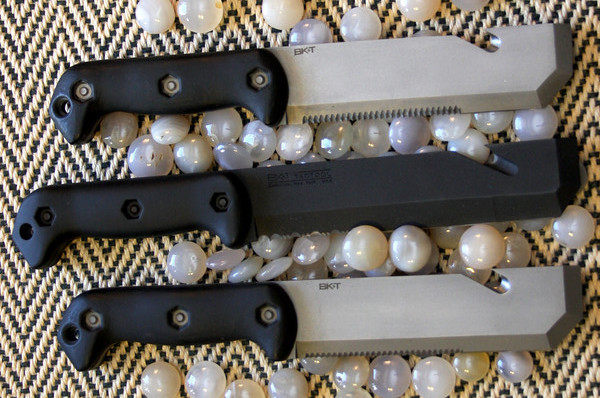
The image features early Tactuls or possibly Divtuls — not sure which models or generations.
We’re starting with the very first entry in 1990: the Becker Knife & Tool Tactul II. These earlier knives are hard to nail down because they have evolved or gone the way of the dodo. You might not be familiar with the Tactul II, but you might know the modern day version better known as the KA-BAR Becker Tac Tool.
Before teaming up with KA-BAR, Ethan Becker had his own company who put out knives made by other manufacturers. The original description from Blade Magazine on the win says the knife is a “heavy duty diving/utility knife that is a saw, hammer/nail puller, screwdriver, chisel, pry bar and knife all in one.”
1991: Gerber Gator Serrated
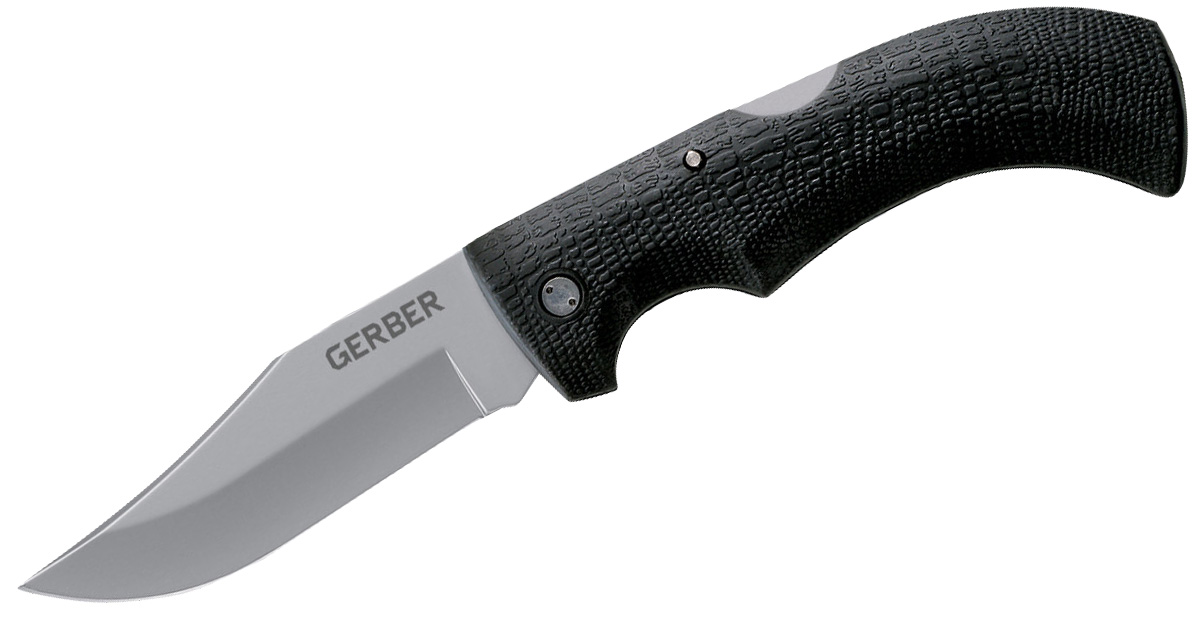
A more recent version of the Gator.
The Gerber Gator feels like old news now but it was once one of the most innovative when first released. The overall design with the gator-like textured handle was superb. In fact, this — like the Tac Tool — remains a very good knife that’s still around.
1992: Equip USA El Diente
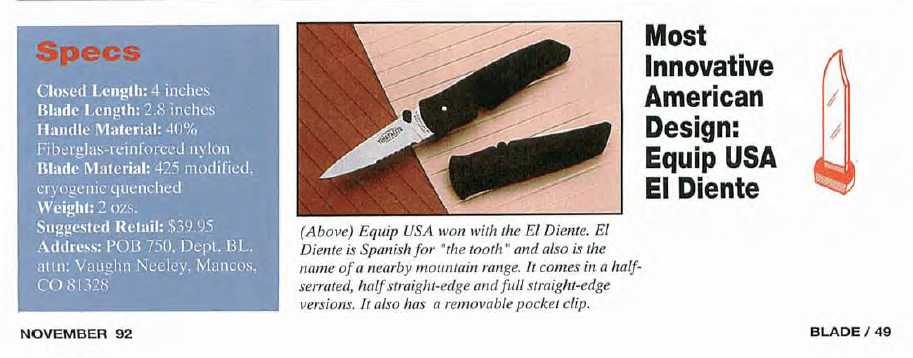
Image provided by Blade Magazine
I wasn’t able to find any information about the Equip USA El Diente, so I reached out to Blade Magazine (which sponsors the Blade Show) to find out more.
Apparently, it had a 2.8-inch blade made from 425 modified cryogenic quenched steel. I assume it was the steel and cryogenic process that made this knife so innovative. If anyone has any more information, let us know.
1993: Soque River Lev-R-Lok
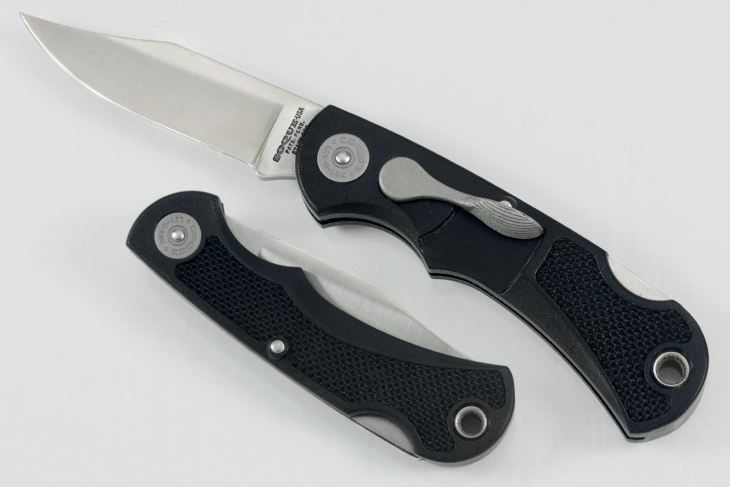
A Soque River version of the knife.
The Lev-R-Lok is a really interesting design that’s still around. At the time, the knife was marketed by Soque River before Camillus (which owned the design) started producing it under its brand.
Check out the Camillus version here:
1994: Knives of Alaska Brown Bear Combo
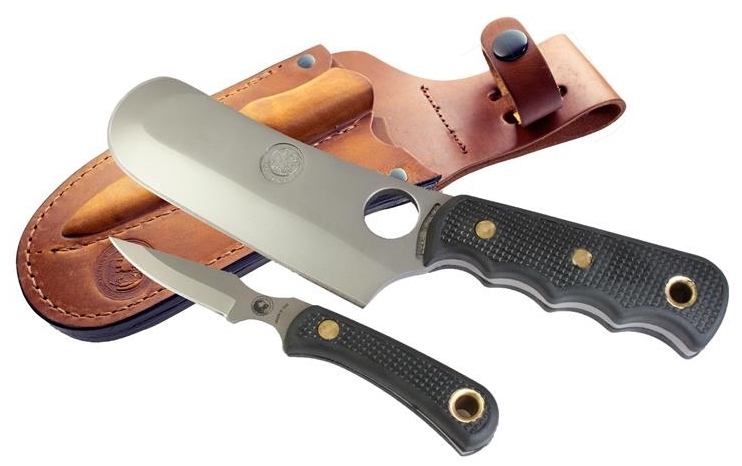
This is a combo set with two knives — a skinner cleaver and a caping knife. It is meant to be a complete field dressing system.
The knife was the first developed by Alaskan outfitter and bush pilot Charles Allen, according to Knives of Alaska. The rounded Alaskan Ulu design was an interesting choice.
1995: Benchmark Feather Mate Sharpee
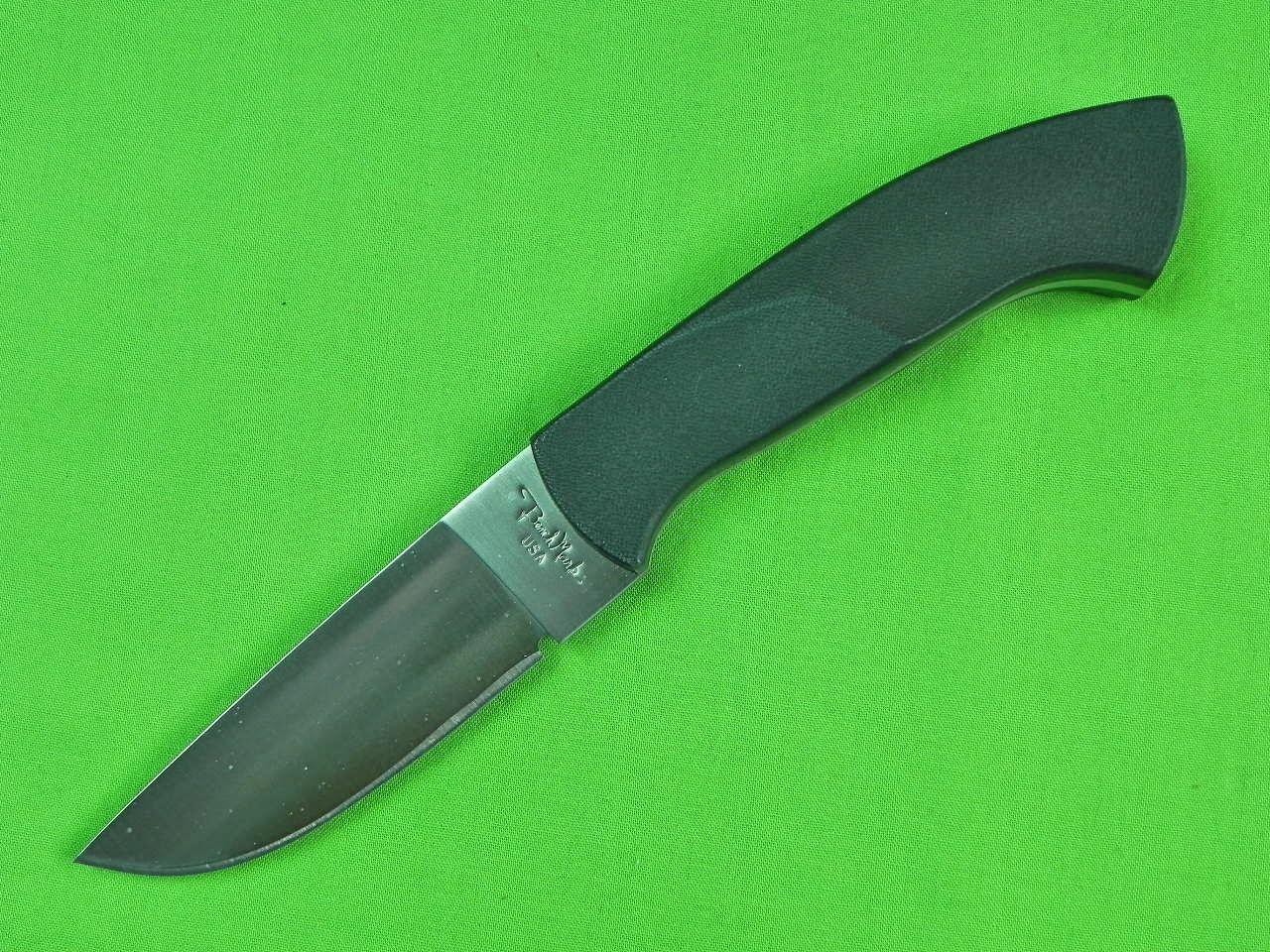
I don’t know too much about the Benchmark Feather Mate Sharpee. I believe Benchmark was first created by Blackie Collins before changing hands a few times. This knife apparently had a sharpener within the handle, which you could unscrew with a Philips screwdriver.
(Image from Worthpoint at https://www.worthpoint.com/worthopedia/1997-benchmark-feather-mate-sharpee-1801068509)
1996: Bear MGC Bear Jaws
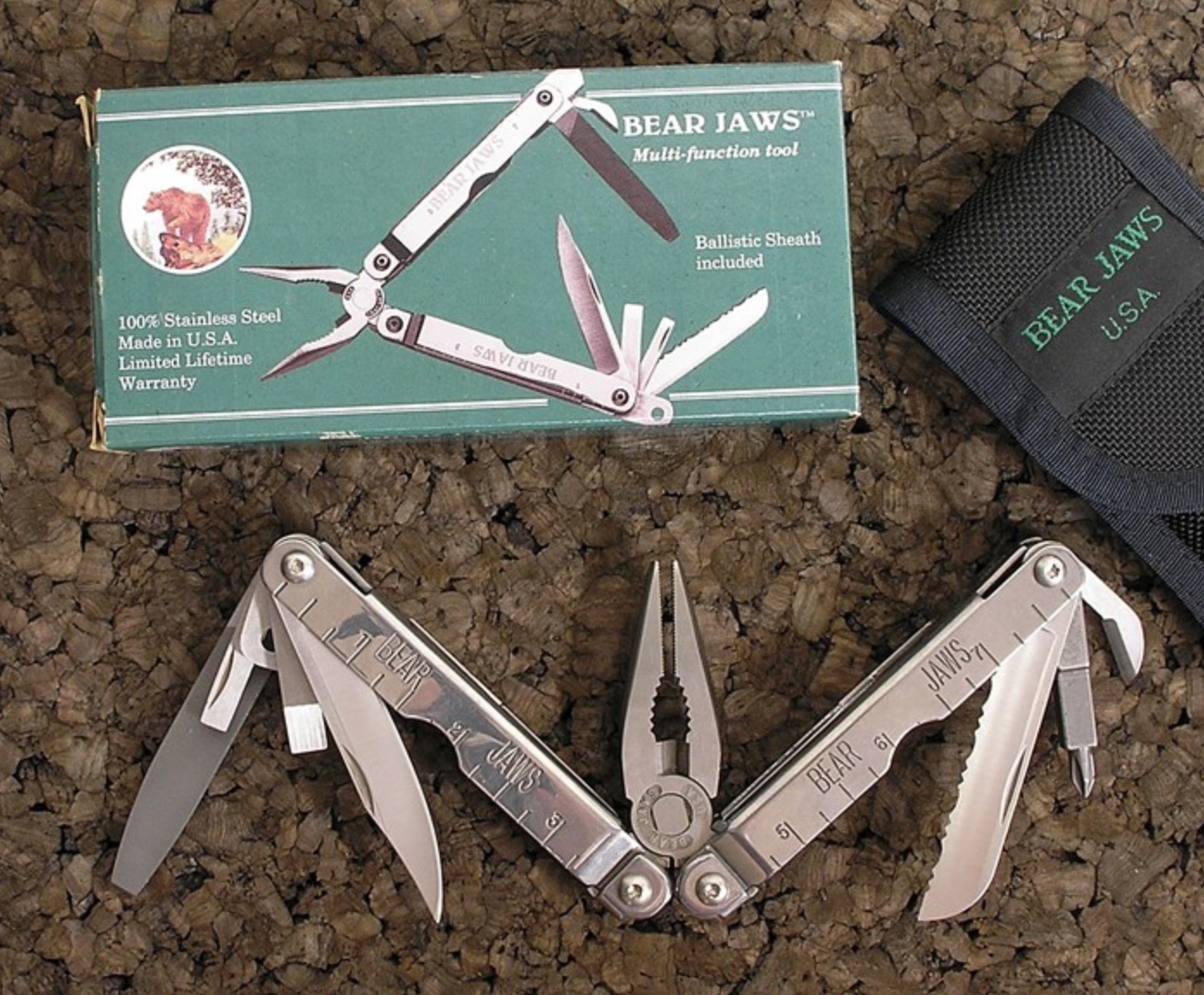
From what I could find, the Bear Jaws was a direct take on the Leatherman PST with one major difference — you could open the tools when closed. This was (and remains) an excellent idea.
Bear MGC was eventually bought by Victorinox, which used the knife as the basis for the SwissTool. The company is now back in the hands of Bear & Son Cutlery, which still makes the Bear Jaws.
1997: Meyerco Strut’N’Cut
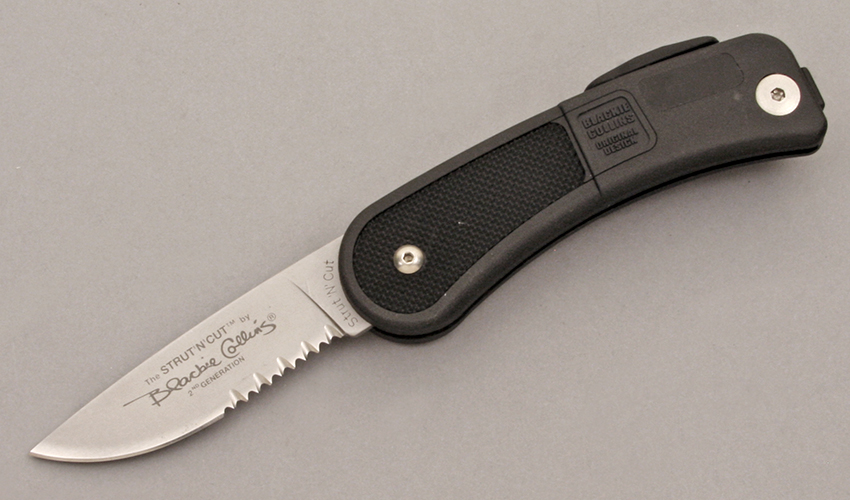
Ken Onion is frequently credited as the creator of the assisted-opening mechanism, but others say Blackie Collins was the first. The truth is that they likely made their respective mechanisms concurrently.
Collins’ knife was called the Strut’N’Cut and it won Most Innovative American design in 1997 for being the first assisted-opener. The knife was actually pretty clunky, but it was definitely revolutionary.
Here’s a good take from cutlerylover:
1998: Camillus CUDA
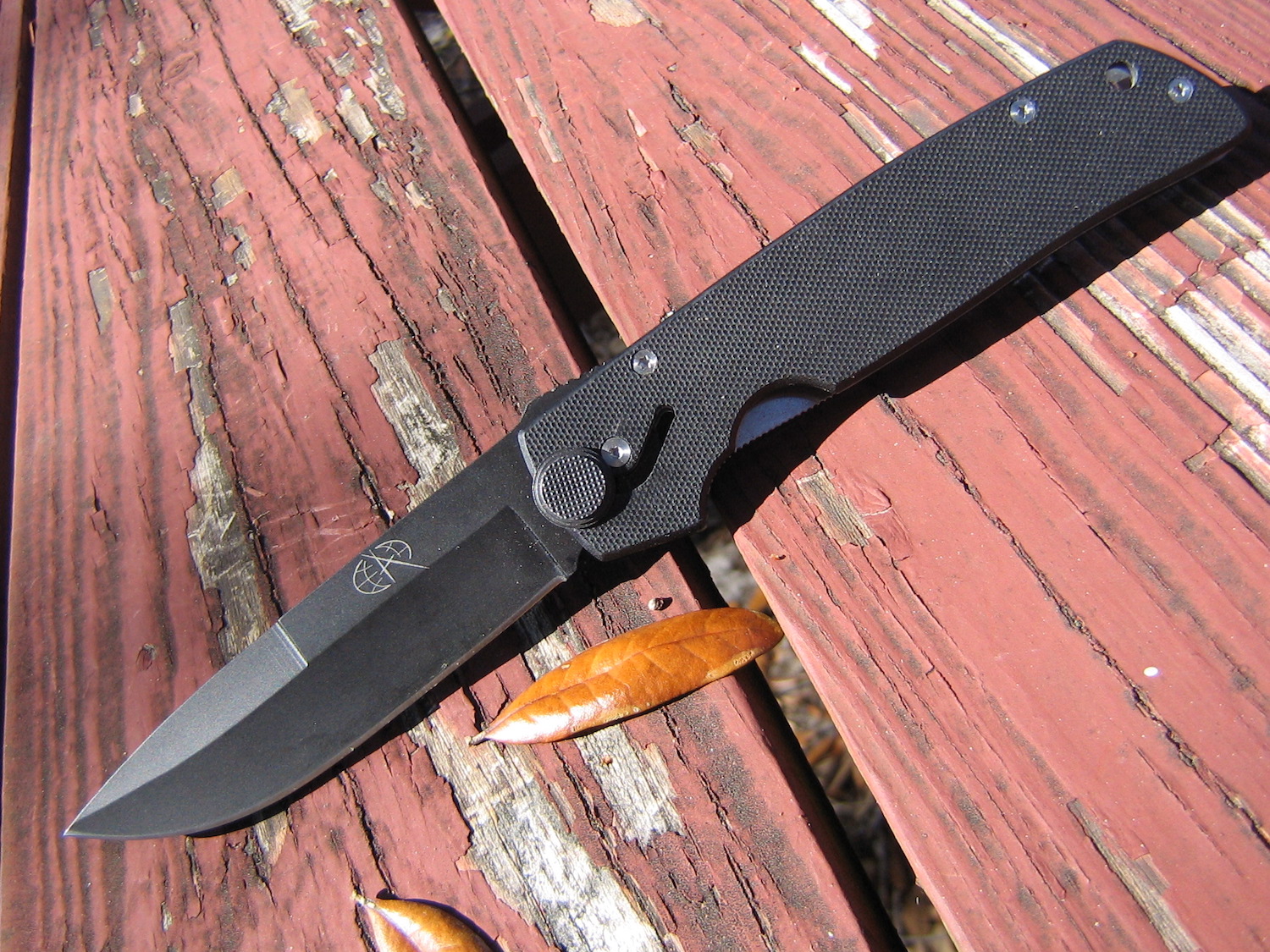
Image from our old pal Scott Rauber at pocketknivesblog.com
The Camillus CUDA, also known as the Camillus Ultra Design Advantage, was another knife ahead of its time. It has a quick-opening mechanism without being considered an auto.
These knives are still around.
Here is another long take from cutlerylover:
1999: SpeedTech Synergy
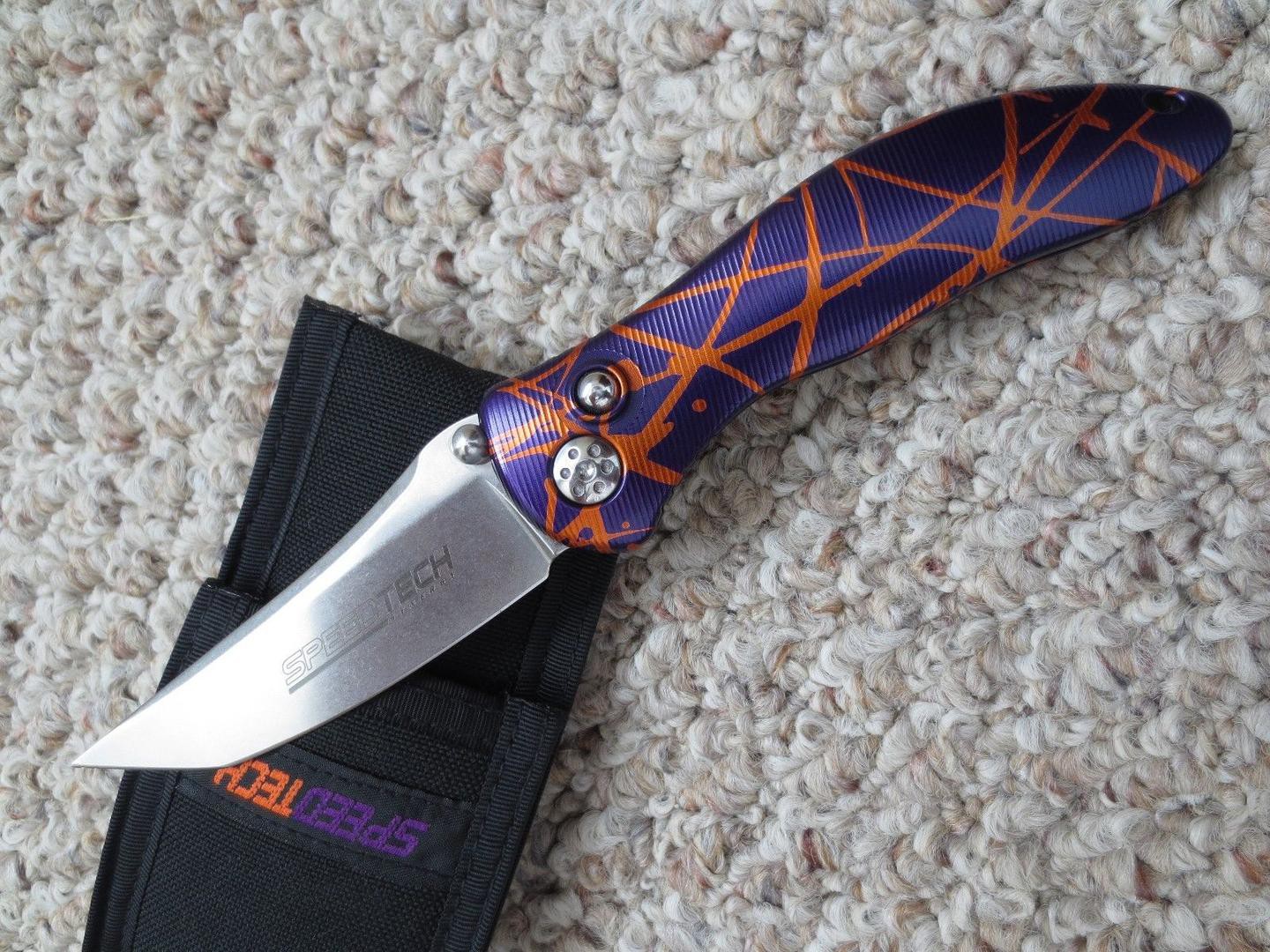
Image from Worthpoint at https://www.worthpoint.com/worthopedia/speed-tech-synergy-button-lock-1788573416
The SpeedTech Synergy was also ahead of its time. These knives were pricey in 1999 dollars (about $200 if I recall correctly), but they had one-piece aluminum frames, blade grinds done by Allen Elishewitz, button locks, and excellent fit and finish.
I believe SpeedTech went out of business not long after.
2000: Gerber Multi-Plier 800 Legend
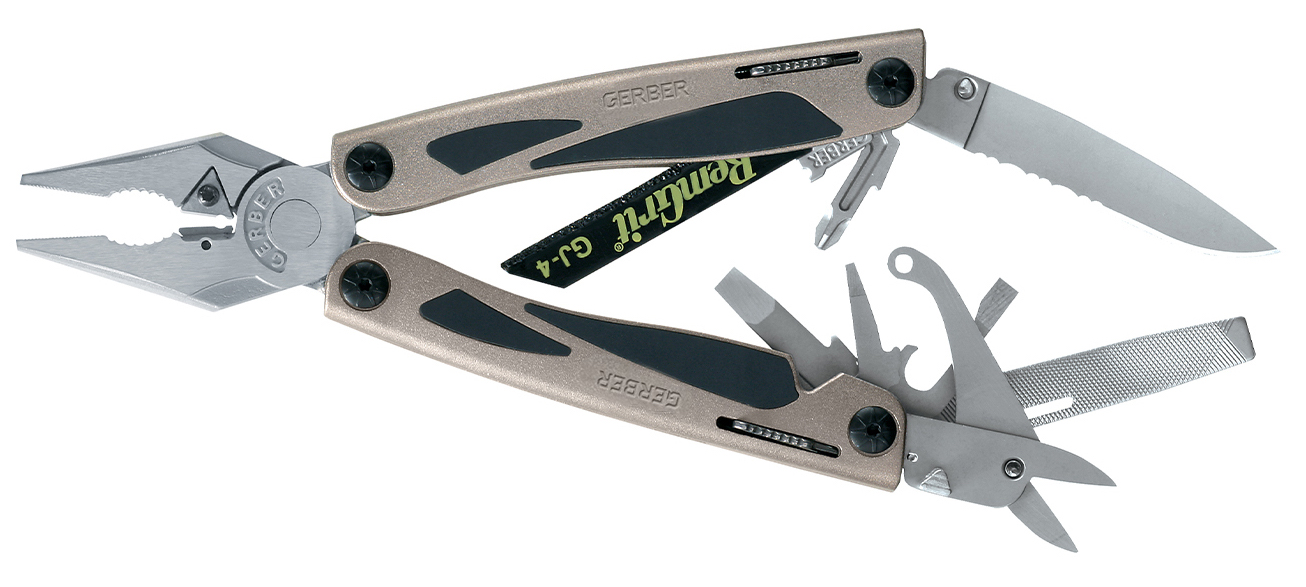
Gerber built upon the plier multitools of the past with spring-loaded pliers and tools that open when closed in the Gerber Multi-Plier 800 Legend. What this knife did that was new, however, was create replaceable tungsten carbide wire cutter inserts. This helps the longevity of the tool.
2001: TiNives BayoKnife
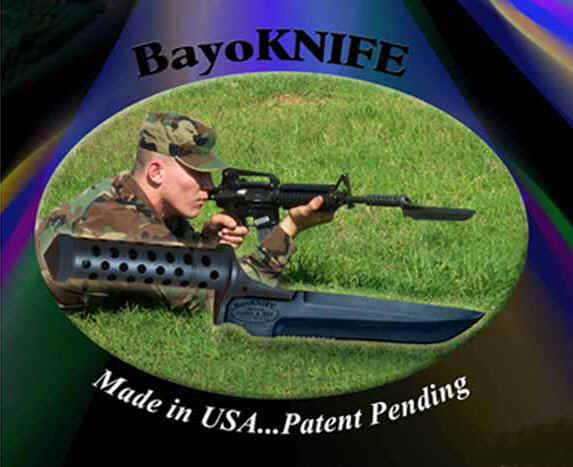
Image I salvaged from the old TiNives site via Wayback Machine
I had the most trouble finding this knife. The TiNives BayoKnife was a different take on the bayonet that was designed to be a bayonet and regular fixed blade that screws on over the rifle barrel. The bullet actually passed through the knife.
Here is a bonus image sent by Blade Magazine.
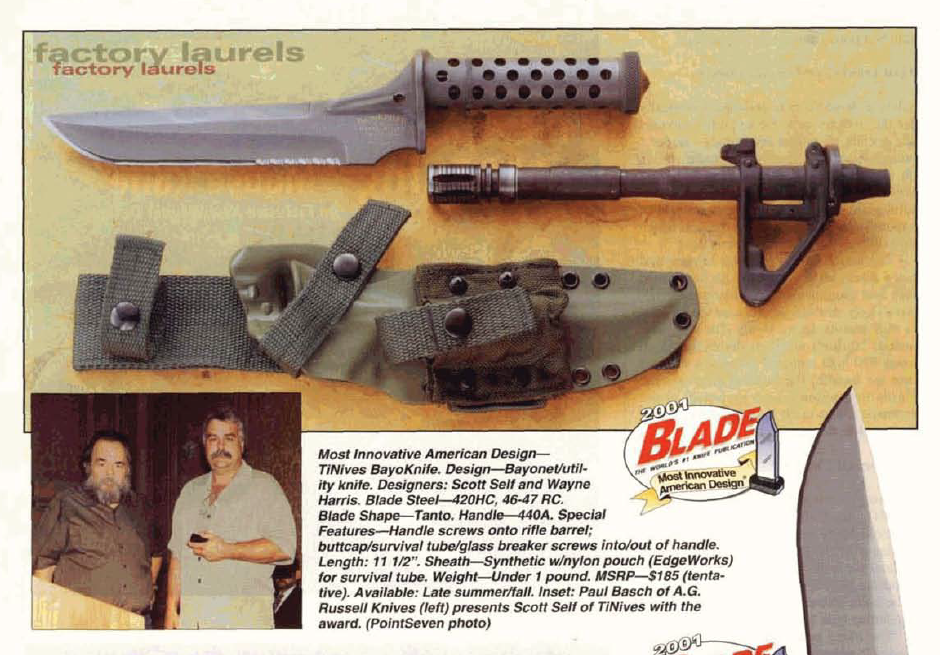
TiNives — like SpeedTech — came out with some truly amazing and advanced designs. The company won the manufacturing quality award in 2002 but went out of business a few years later.
2002: Phantom Rip Cord Medallion
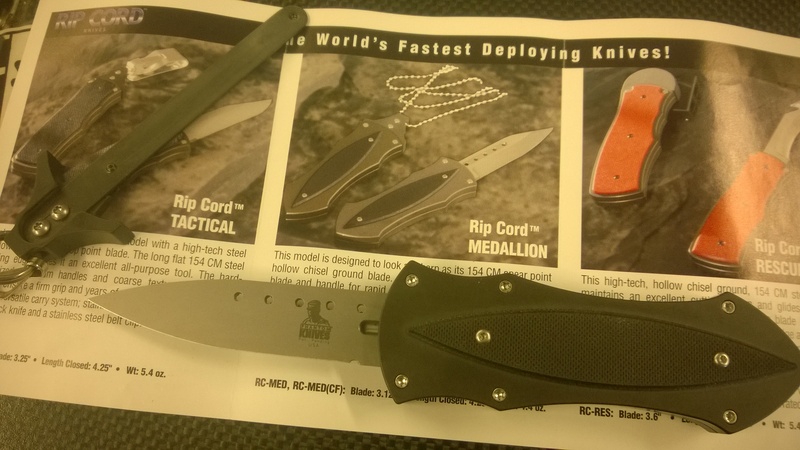
This was an interesting knife from Phantom Knives that was marketed as one of the fastest deploying knives in the world. It would sit on a chain around the neck, but when you pulled it, it would deploy almost like an OTF auto.
(Image from Bladeforums)
2003: Buck Revolution-XT
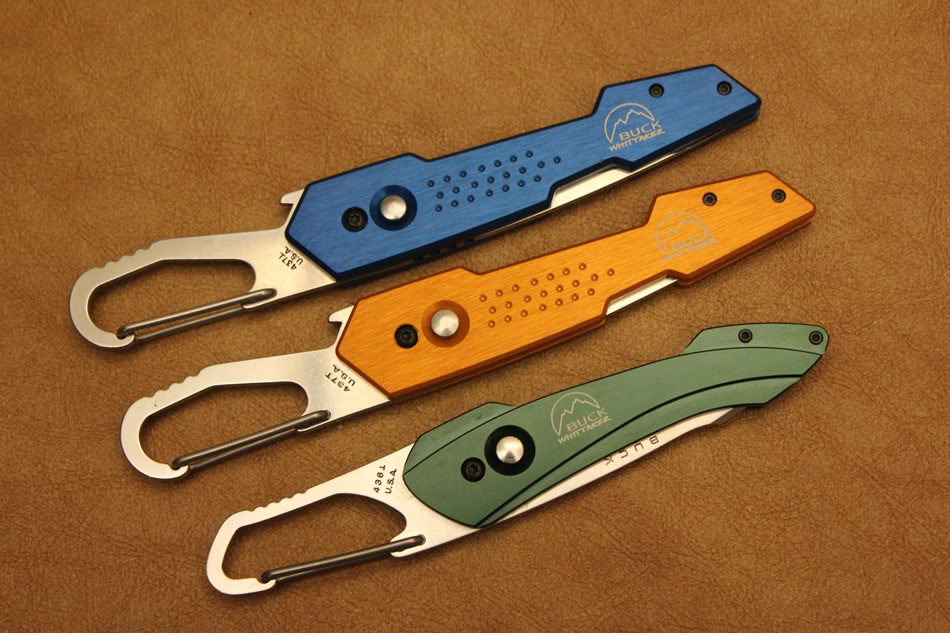
Images from Plumberdv on Bladeforums
Revolution-XT was a collaboration between Buck and mountaineer Pete Whittaker. It was half fixed blade and half folder. The handle itself was a sheath when closed and a carabiner allowed the knife to be attached to nearly anything.
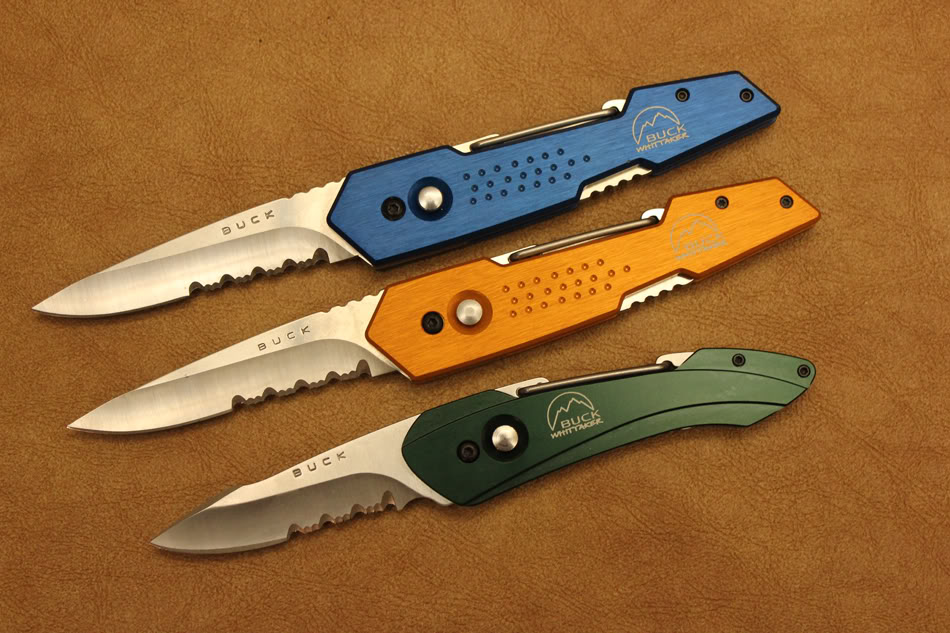
They’re pretty good knives that just didn’t appeal to the masses for some reason.
2004: Gerber Nautilus
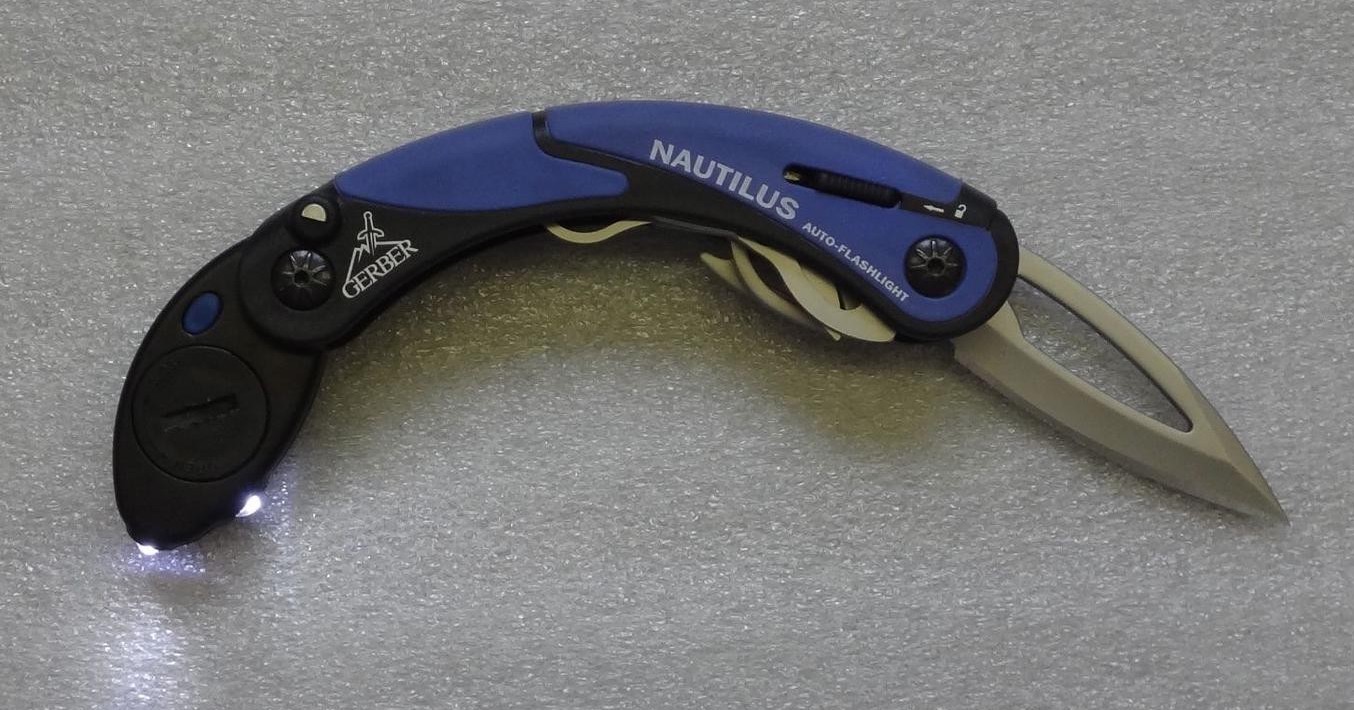
Gerber Nautilus from Worthpoint at https://www.worthpoint.com/worthopedia/gerber-nautilus-multi-tool-light-soft-1807623594
The Gerber Nautilus was an ugly-looking multitool that had some cool features. The curved tool had a spring-loaded flashlight with a few modes as well as scissors, screwdrivers, bottle opener, and one-handed opening blade. All the tools locked open too, which was a welcomed feature.
The curved design was described as ergonomic, but it just looked uncomfortable.
2005: Kershaw Hawk E.T.

This is the start of a trilogy of innovative knife winners from Kershaw and Grant & Gavin Hawk. I’ve covered these three models extensively elsewhere, so I won’t go into too much detail, but the Kershaw E.T. is called the External Toggle after its unique opening mechanism. There are a handful of ways to open the blade with this system.
Although it is not the most practical design, it does showcase the ingenuity of the Hawks.
2006: Zero Tolerance M.U.D.D.
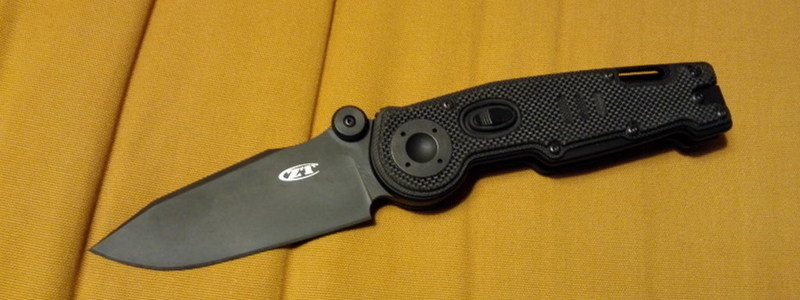
Image from Lionseek
Zero Tolerance, a company under the Kai umbrella with Kershaw, teamed up with the Hawks to bring their renowned M.U.D.D. design to the masses. The M.U.D.D. stands for Multi-
This knife is discontinued, but the M.U.D.D. is still alive in some mid-tech and custom versions.
2007: Kershaw R.A.M.
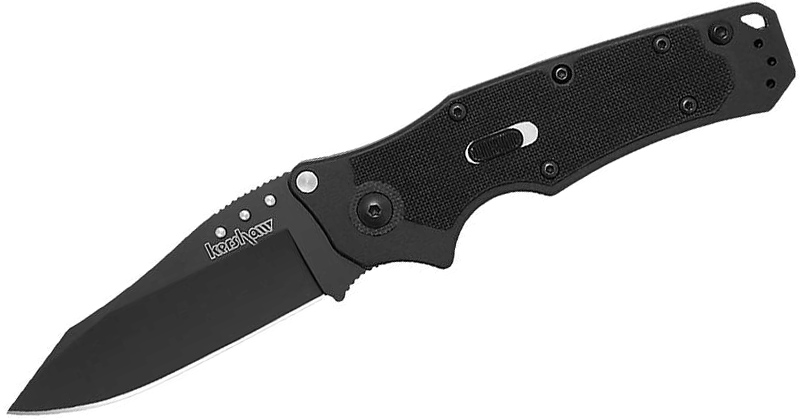
The RAM — another Hawk design — stands for Restraint Articulated Mechanism and has a Hawk Lock like the M.U.D.D. Over the years people have raved about just how smooth and buttery the action on this thing is. It feels like an assisted opener but that’s just the Hawk Lock.
This is discontinued but parts of the RAM are still alive in the Kershaw Induction.
2008: Leatherman Skeletool
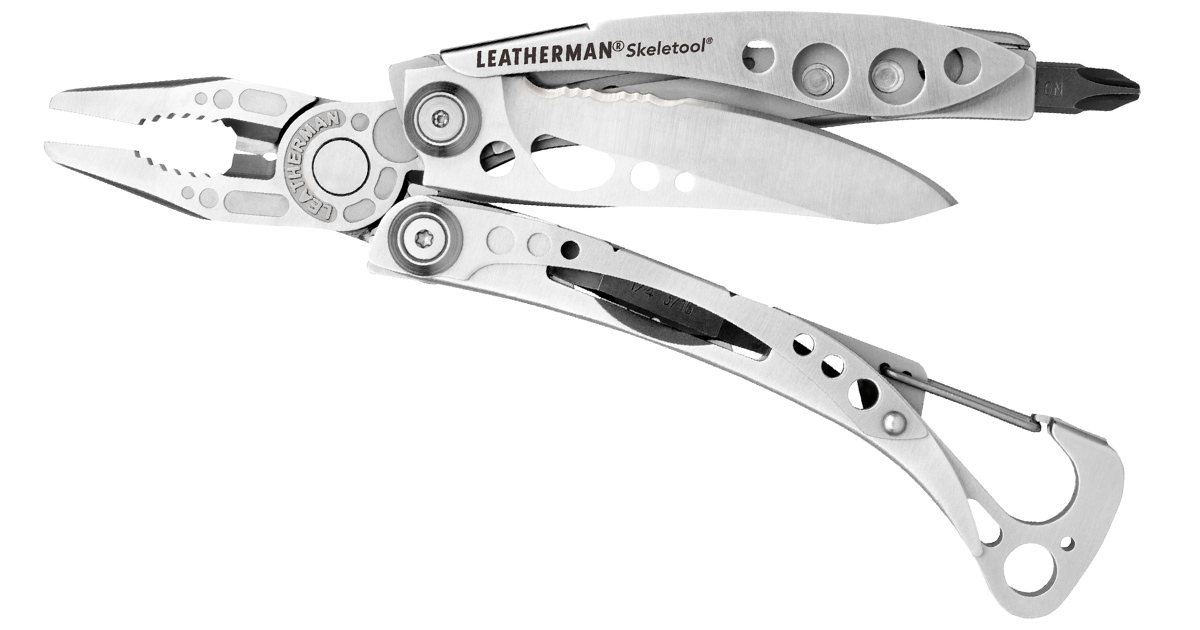
The Skeletool took the pliers genre and made it cool for everyday carry. The knife is a pared down version of the Leatherman with a new look that I find more ergonomic. This knife is alive and well and even comes in several different styles.
At the time, the hype for the Skeletool was pretty high, and since it met expectations, it was a no-brainer pick for most innovative.
2009: Fox Knives USA Rescue II (REZ Q2)
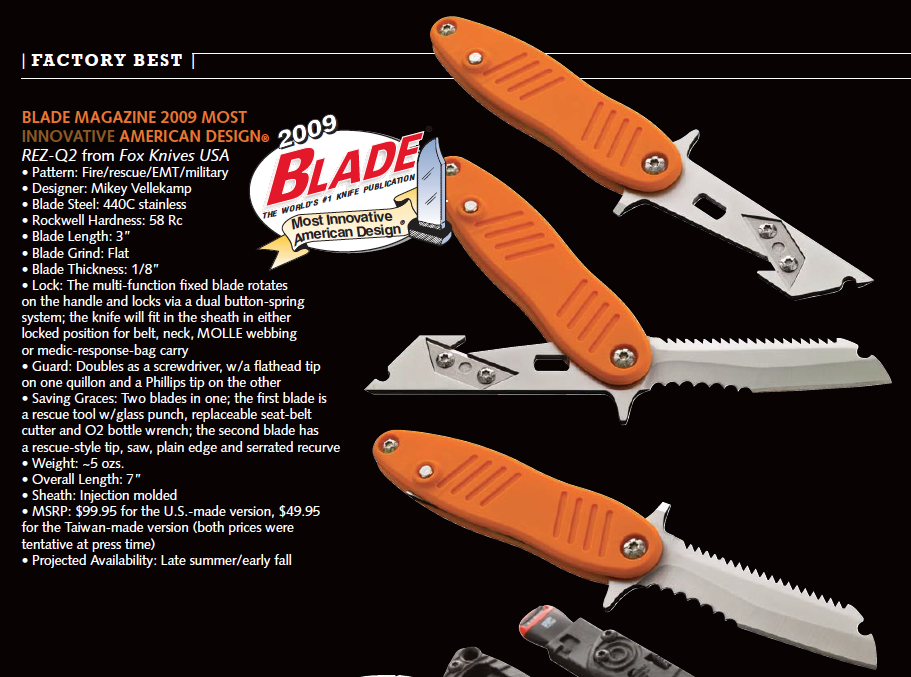
This is another knife I wasn’t able to find on the internet, so again Blade helped me out. It is reminiscent of the SwingBlade series or the Buck Revolution-XT. It is designed by Mike Vellekamp and has a dual-locking blade you can rotate. There are a ton of tools in this thing, including screwdrivers, blades, glass punches, saw, seatbelt cutter, and more.
The most recent thing I could find out about the knife came from a few years ago when Fox said it still hadn’t released the knife
2010: Spyderco Manix 2 Blue Lightweight
The Spyderco Manix 2 Blue Lightweight, sometimes called the Manix 2 in Blue Translucent Handles, was an innovative knife at the time because of its all-plastic handle scales. The scales meant the weight of the knife was cut down to a mere 3 ounces, down from the nearly 5 ounces of the G-10 Manix.
Despite the plastic scales, this knife is very functional and dependable.
2011: Microtech Select Fire
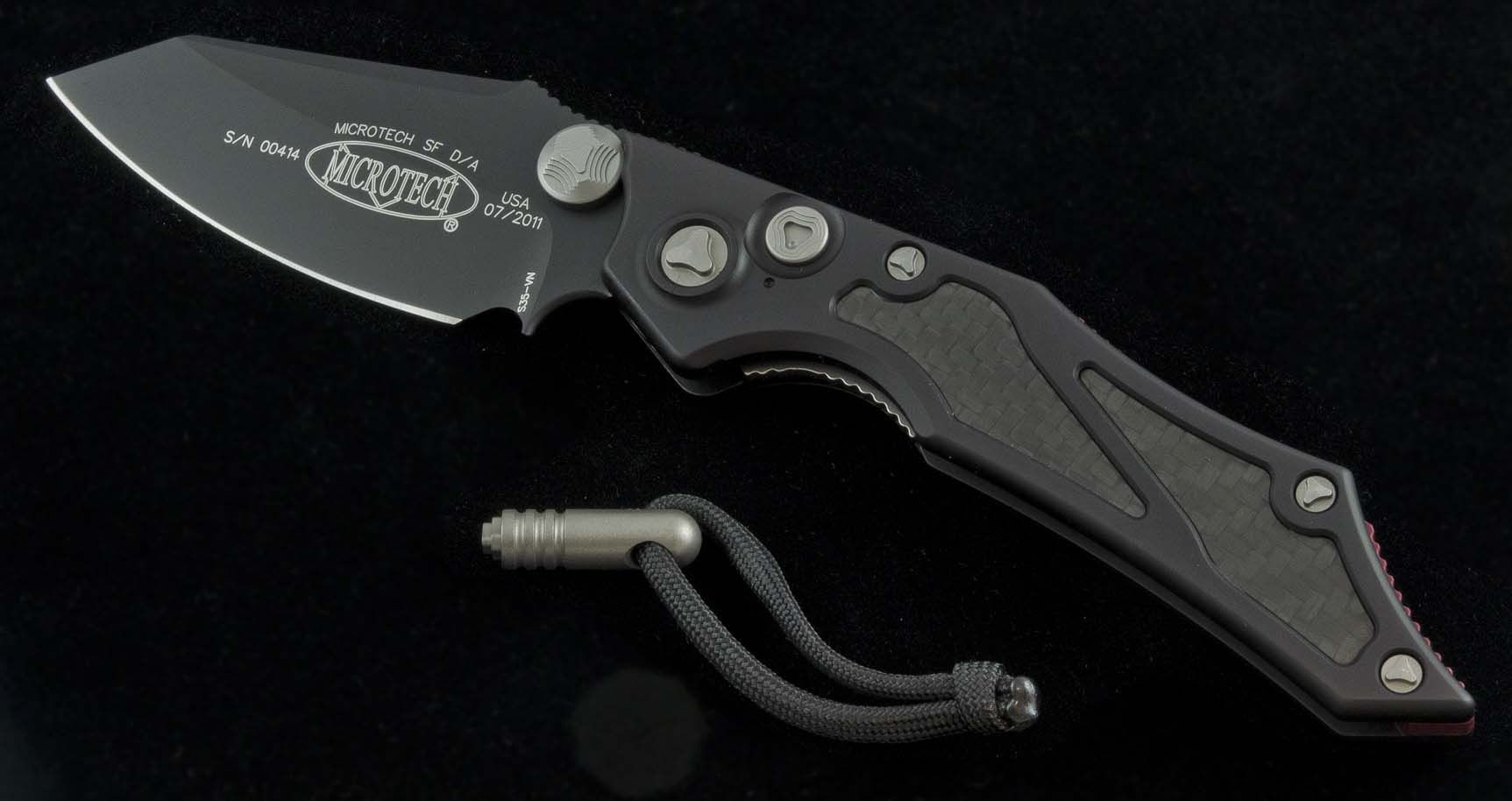
Image from The Hollow Grind
The Microtech Select Fire was an interesting design that came in a dual action or manual action version. In the dual action version, you could turn it into an automatic folder or a manual folder by turning a key that rendered the auto button useless.
On top of that neat feature, the knife was well-designed and garnered a lot of praise from the knife community.
2012: Spyderco Autonomy
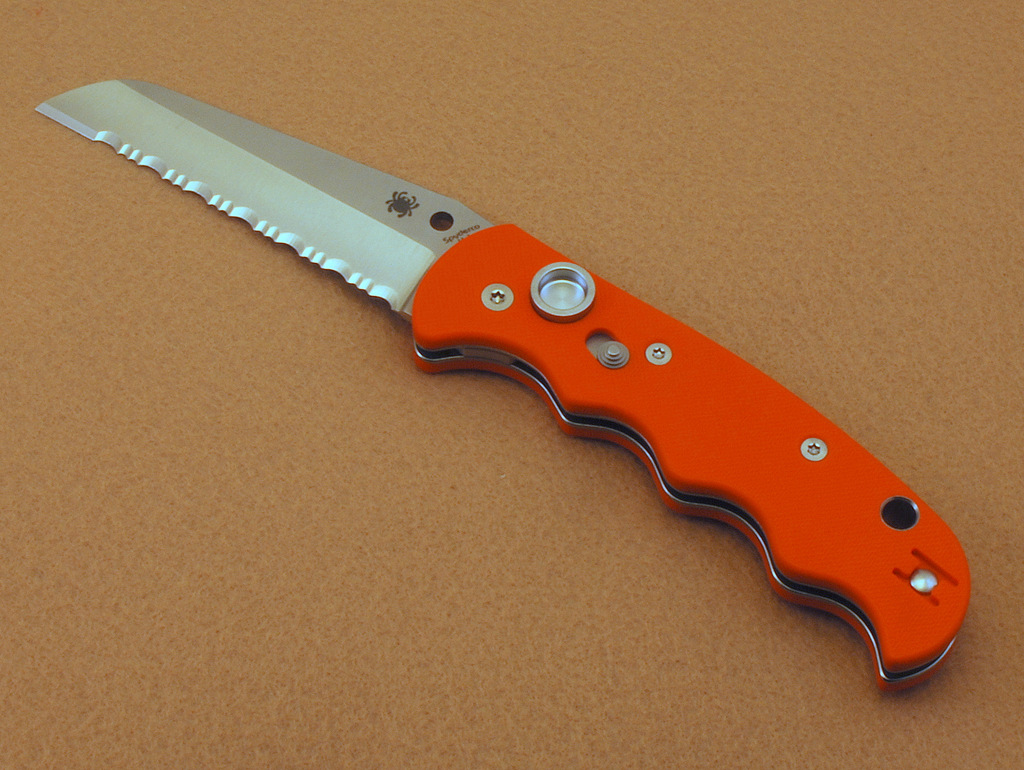
Image from Spyderco
The Autonomy was born out of a design challenge to Spyderco from the Coast Guard. They needed “a high-performance knife that could be easily deployed with only one hand while wearing heavy gloves, is impervious to salt water, could be easily maintained and, above all, would cut with extreme authority.” Thus, the Autonomy was made.
The knife was called a groundbreaking achievement in the automatic knife field.
2013: Microtech D.O.C. Killswitch
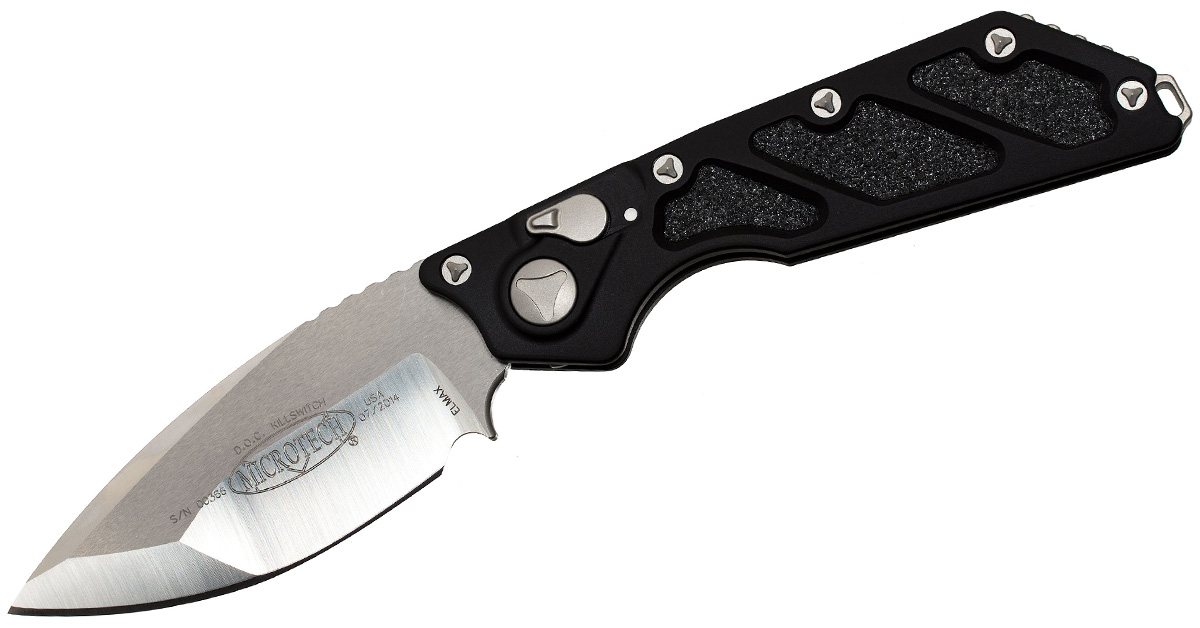
I’m on record saying the Microtech Death on Contact Killswitch is an awful name for a knife. Still, that doesn’t make this knife any less innovative. The original Death on Contact was a flipper, I believe. However, the Killswitch added a new element to the knife.
The automatic button is locked when the killswitch is turned one way. When it’s turned the other way, it’s good to fire.
2014: Spartan Integral Frame Slipjoint
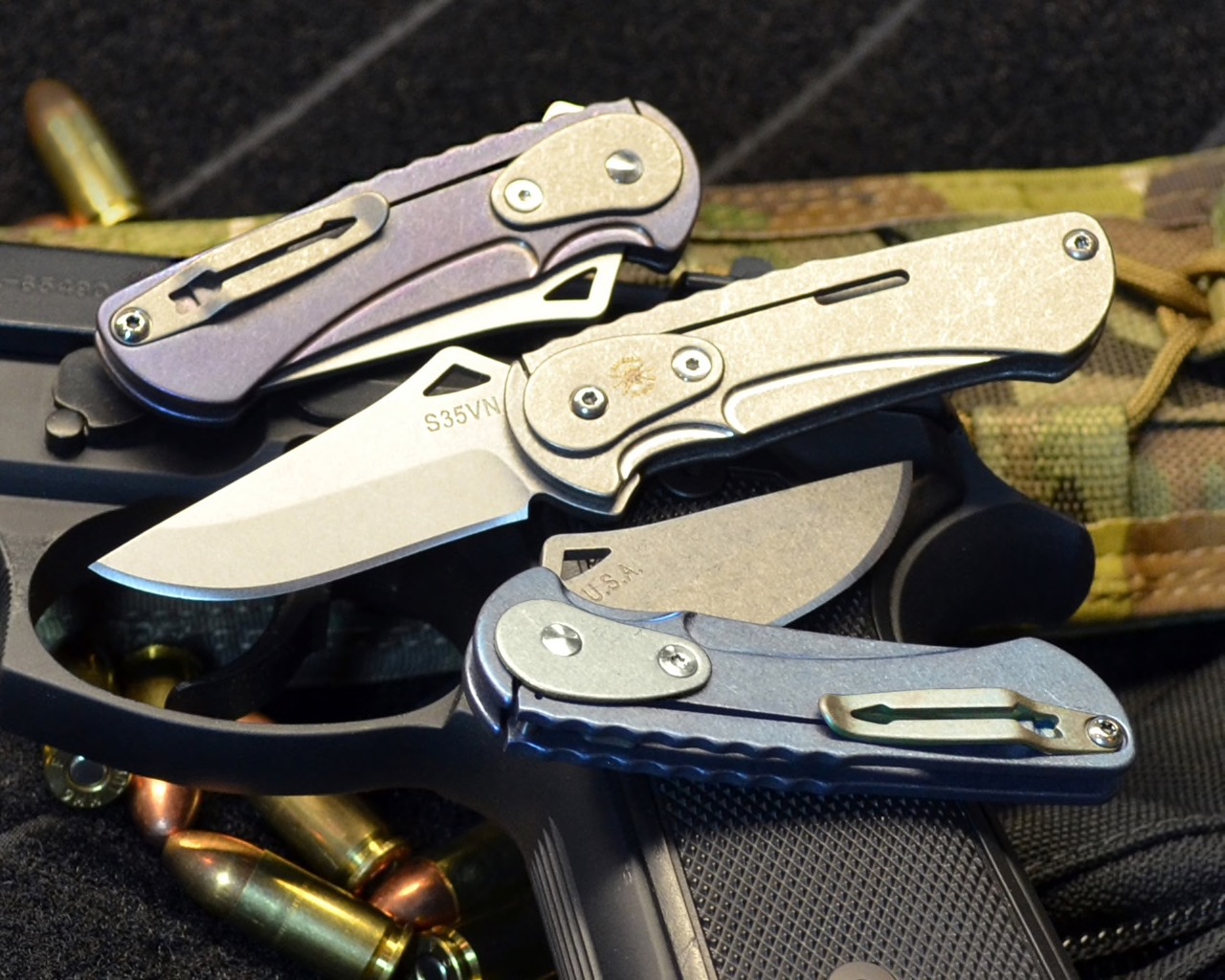
The conceit of the Spartan Nymph was to make a slipjoint without so many moving pieces. The result was an integral slipjoint that reminds me of the now discontinued Spyderco PITS.
Here’s how, according to Spartan: This folder eliminates the need for a back spring by using what we call an “Integral Frame Slipjoint”, the dorsal side of the frame is cut to work as a spring and holds a pin that creates a bias to close and open.
2015: Koenig Zenaida

The Zenaida is the original CRKT Homefront, except for higher-end knives. This knife was constructed entirely without screws and could be disassembled completely without any tools.
The design, along with the fit and finish, made this knife a winner. I don’t think Koenig makes this knife anymore unfortunately.
2016: Mandiola Defense CDHK
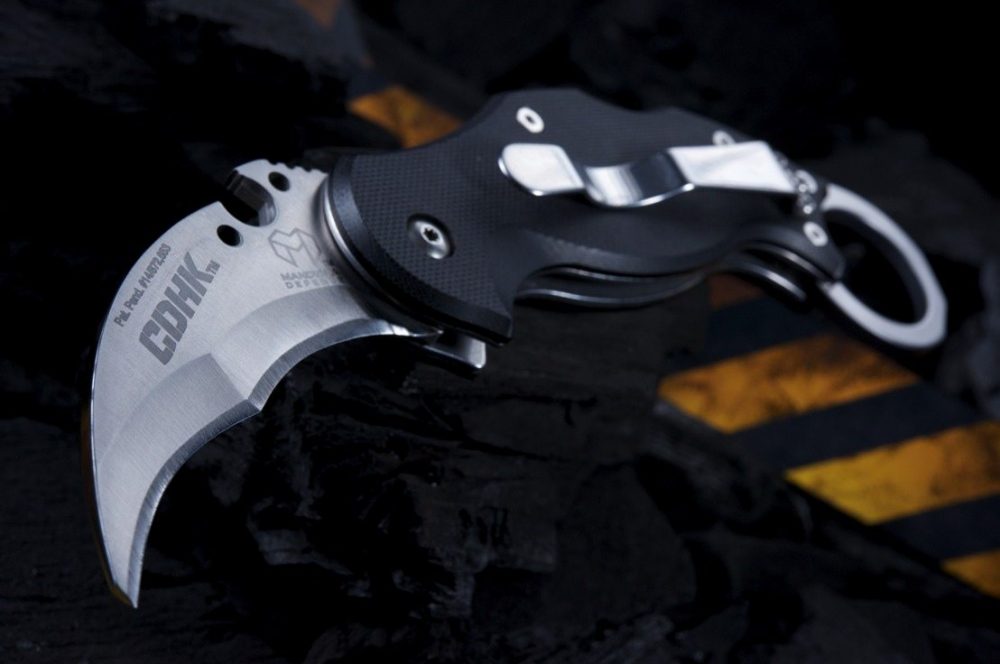
The CDHK (Cold Dead Hands Karambit) was designed by Mandiola Defense Solutions, LLC & Mike Vellekamp Knife & Designworks. This knife is seen as more of a multitool karambit/self-defense tool packed with a ton of features, including a patent-pending vex drive tool attachment that goes on the blade and a window breaker karambit ring.
2017: Tighe Breaker Integral Automatic
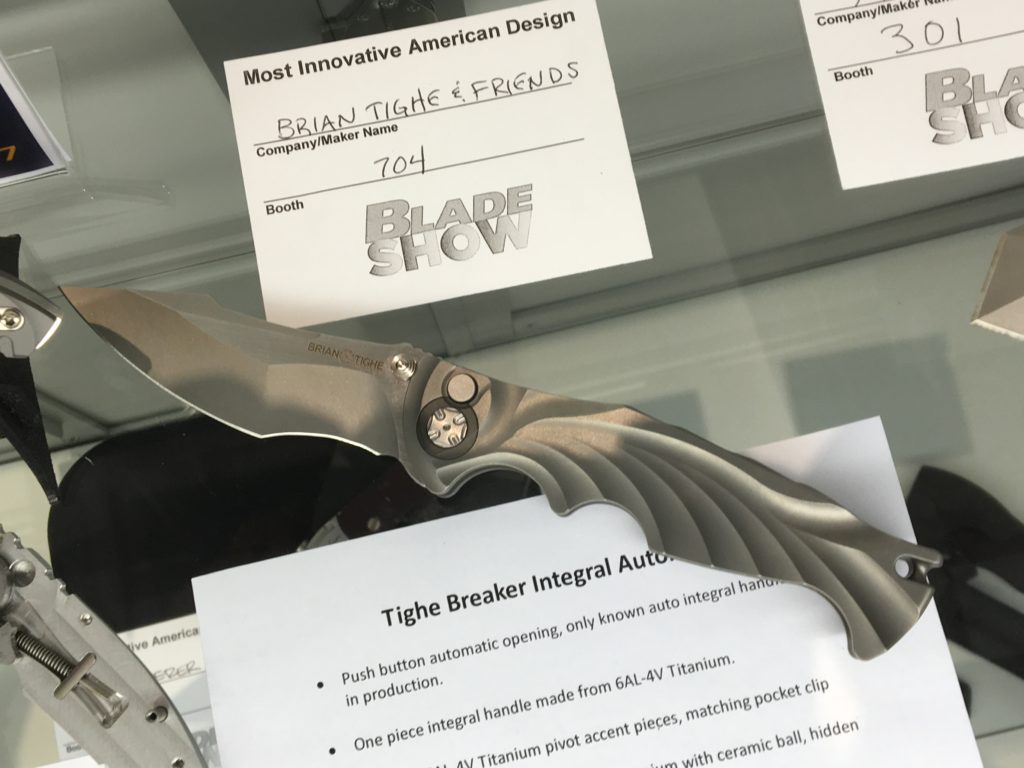
Image from Blade Magazine
The Tighe Breaker Integral Automatic is the first integral automatic knife. This Brian Tighe design is made from a single piece of titanium and can be had in either manual or automatic.
It uses a button lock mechanism and is downright amazing to look at.
2018: Rick Hinderer Tri-Way Pivot
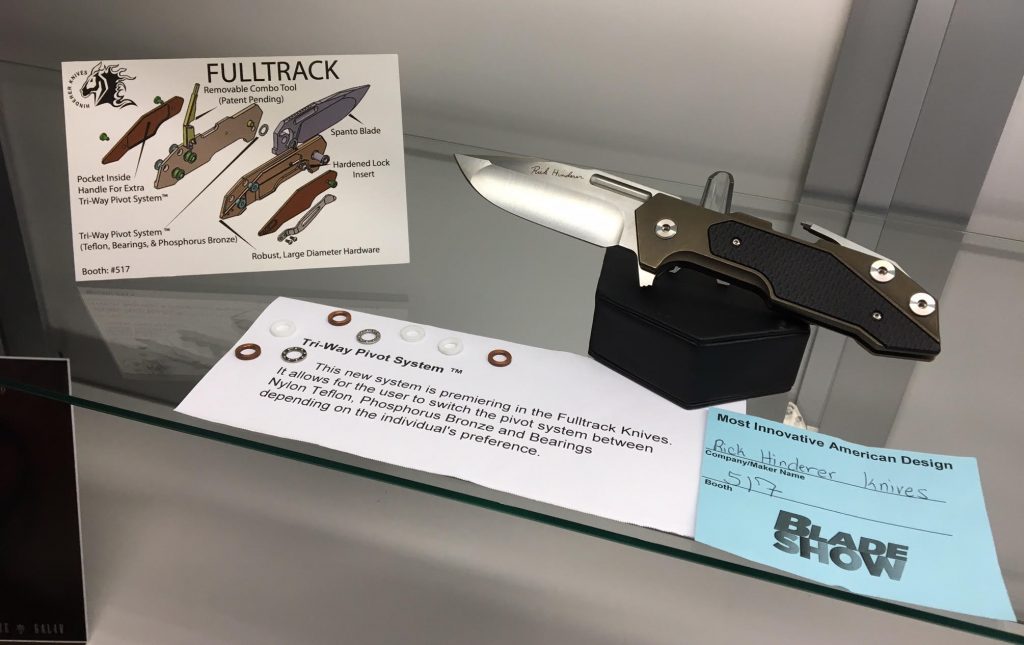
In 2018, Rick Hinderer won the award for the Tri-Way Piot system first seen in his Fulltrack models. This handy little pivot allows the user to switch between bearings, bronze washers, and teflon.
It seems a little bit unnecessary but it also allows the user to pick which one they prefer the best. I believe it’s also intended to allow users to switch between tasks.
2019: Spyderco Para 3 Lightweight
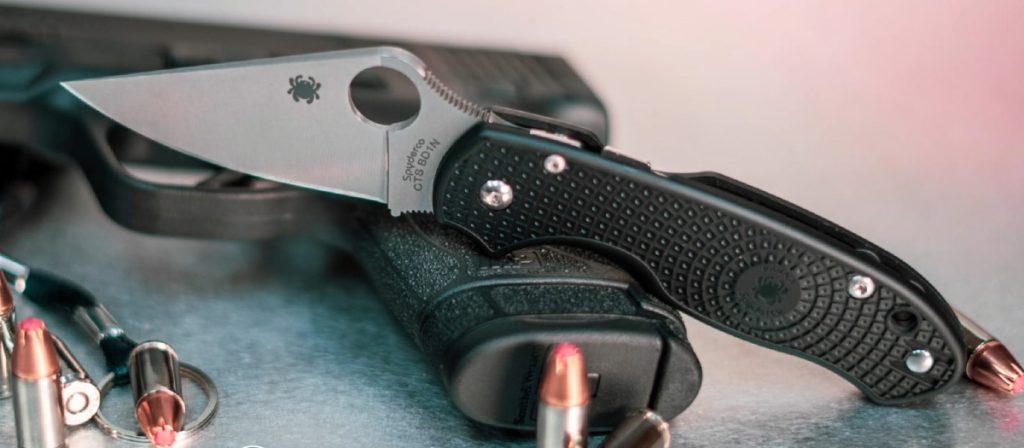
The Spyderco Para 3 is not a new knife, but when Spyderco opted for the lightweight treatment, it gave the knife a whole new life. Its somewhat unfair to call this an innovative knife since this isn’t the first lightweight model to come out of the Spyderco. (The Manix won this award back in 2010 for the lightweight treatment.)
My guess is that it was also the inclusion of the Compression Lock into the lightweight design that gives this guy the nod over others.
2021: V Nives Metal-Tech
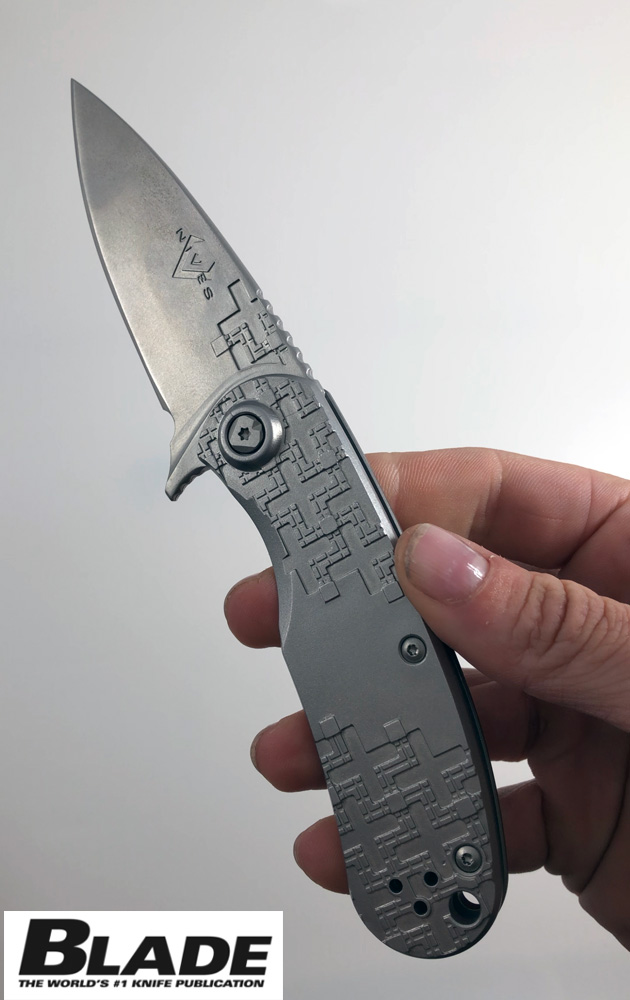
As you might expect, there was no winner in 2020 because that’s the year we should never speak of again. But Blade Show was back in 2021, and the winner was this folder from V Nives.
I honestly couldn’t find much about the knife, but it apparently has an etched metal handle with etching in the blade as well.
2022: Asheville Steel Warlock Sorcerer Supreme
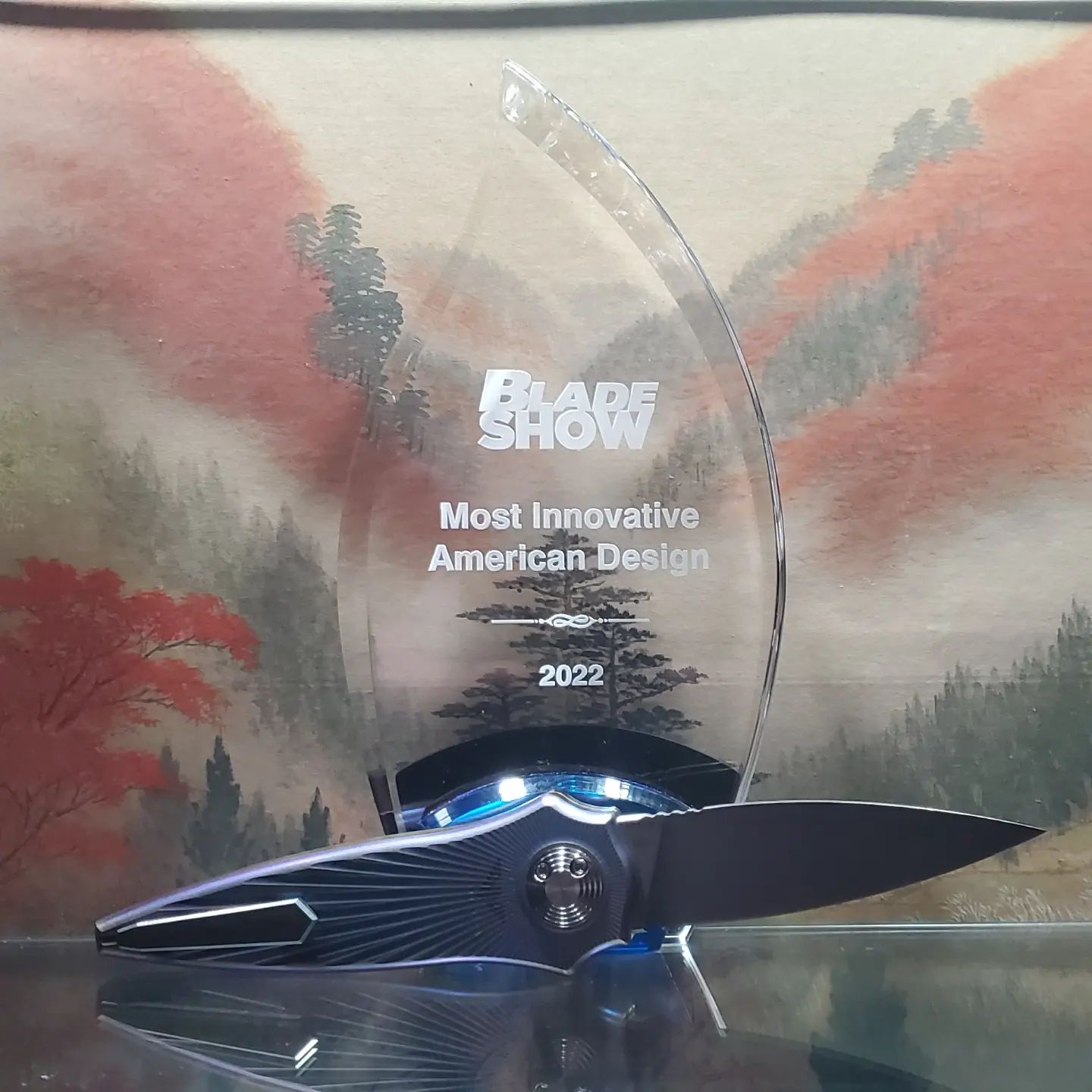
The Asheville Paragon Warlock is not a new knife. In fact, we named it a knife with one of the most interesting opening mechanisms you can find back in 2016.
But Asheville Steel decided to take things to the next level with the Warlock Sorcerer Supreme. This knife features the same unique design but with custom production titanium scales and an S35VN blade.
This is a knife you have to see in action to truly appreciate.
2023: Buck 590 Paradigm

For the first time in 20 years, Buck has once again won the Most Innovative Knife of the Year Award for an American design with the Paradigm.
What makes this knife so unique is the Shift Mechanism, which is a rotating bolster lock. It’s not exactly a new lock type but the hidden lock is definitely awesome. This model has an assisted-opening raindrop Damascus blade with ivory G-10 scales.
Check it out in action.
2024: Spyderco Paramilitary 2 Salt

This knife is somewhat of an unusual win in that it’s not completely innovative but more of an amalgamation of all the innovations from Spyderco. First, you have the iconic design of the PM2 but it now joins the renowned Salt series of knives that can withstand the beatings of sea water. It has MagnaCut steel and peel-ply G-10 scales. All of the hardware is also made from “ultra- corrosion-resistant materials.”
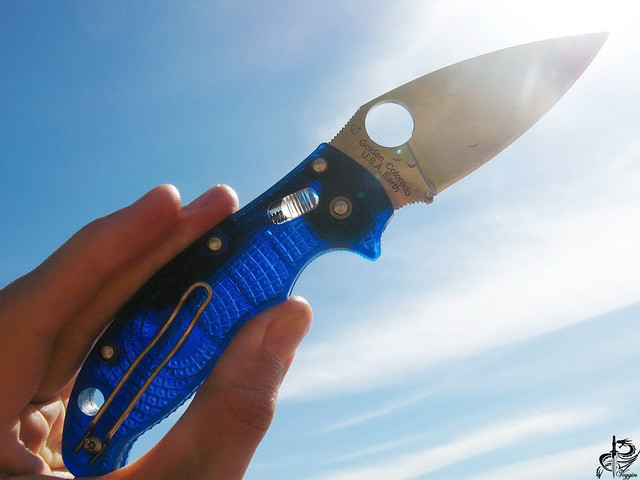




May 24, 2018 at 1:10 pm
“Death On Contact” is a worse name than “Hitman, but I wouldn’t carry either. Wouldn’t want to tell a policeman that was the model name of my knife.
May 29, 2018 at 11:45 am
What a great article. I had forgotten about a few of these, which over the years we take for granted. It’s always nice to see makers and manufacturers push the envelope and come up with something innovative. Feels like these days there is too much focus on types of steel and materials and we’ve sort of been putting out too much of the same.
June 22, 2018 at 4:37 pm
I was the manufacturing engineer for the SpeedTech Synergy project. The “company” was a collaboration between Jim O’Young’s ‘Speed Option’ brand and True-Tech Corp, a silicon valley machine shop. The one piece handle was the main novelty and it won “Most Innovative Knife” at the SHOT show in ’99. It was a fun project but not a money maker even at $300+ which is why it shut down after a limited run. The tricky bit was holding tolerance on the saw cut down the middle of the handle for the blade. A few .0001″ was the difference between butter-smooth and a piece of junk. I’m not sure there has been a knife like it since. I’ve still got a one of a kind prototype with a funky lime green handle. Still butter smooth!
September 2, 2020 at 5:45 pm
Not a one of these stirred my interest and some were just plain stupid!
July 31, 2024 at 7:02 am
Love this blog! The content is always so informative.